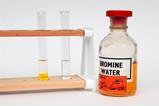Ensure your assessments are fit for purpose with these departmental strategies

Assessments serve many purposes. They help us identify gaps in students’ learning, predict attainment, report progress, check if intervention is effective and decide on suitability for further study.
An important assessment purpose is evaluating the impact of our curriculum. Therefore, it’s vital we don’t treat our assessments as a bolt-on or mere afterthought, but that we think carefully about them and ensure they are in line with our curriculum aims. If we achieve this, we will be able to gather more useful information, gain a better understanding of what our students know, offer the most appropriate interventions where necessary and, hopefully, improve attainment outcomes.
Map out assessments
Our curriculum is planned out. We know what units we teach, when and why. Why shouldn’t we do the same for our end-of-topic or end-of-term assessments?
Our department felt it was worth mapping out our assessments alongside our curriculum documentation. When should they take place? What should they cover? What type of assessments should we use?
Here’s an example of my scribbled, initial assessment map for year 10 combined science. We do two key piece assessments per half term (one if it’s a shorter half term), and follow up with whole-class feedback.
Due to the large number of topics covered in science and to save us some curriculum time, we try to avoid the traditional end-of-unit assessment. Having said that, our assessment plan is not fixed: if something isn’t working or we need to address something, we change it. We map the proposed assessments to our curriculum plan, and create a table showing our key piece assessment topics and when they will be completed.
Effective department meetings
Our director of STEM introduced a ‘look forward and back’ approach to our curriculum. This means a focus on dedicated departmental meeting time to review our curriculum and assessments at the start and end of each half term. In look forward meetings we discuss upcoming schemes of work and assessments, while in look back meetings we review them.
After creating our assessment map, showing what content to assess and when, we turn our thoughts to assessment design.
Ahead of assessment
We think about and discuss the following items in the look forward meeting:
- What key concepts do we need to focus on? We can’t assess everything, so we must ensure we match curriculum aims.
- Do certain topics need more weighting in the assessment?
- How will we structure the assessment? Will we include synoptic questions? Questions from prior topics? Questions from the current unit only?
- What type of questions should we use: multiple choice, short answer, extended response?
- If we plan for a mixed-tier assessment, we must include a balance of questions – or good discriminators – so it’s both accessible for the lowest attainers but also challenging enough for the highest attainers.
- When is the best time to set the assessment?
- How will we assess the topics again in the future? And when will we assess the topics not yet assessed?
- How many papers do we need? And how long should they be? How will we cater for access arrangements? Do we plan for a traditional paper-based assessment?
Members of the department write the assessments and colleagues will check them for quality. They are responsible for ensuring the test is as ‘blind’ as possible and reducing bias. We aim to blind-mark or moderate assignments to further reduce bias.
Assessment time
In our look back meetings at the end of half term, we assess the assessments:
- Did the assessment actually sample our curriculum appropriately?
- What was the final assessment structure? What types of questions were used?
- Were the instructions/questions clear and unambiguous? Did we adequately cater for access arrangements?
- Was there a broad distribution of marks? If the assessment was mixed tier, was it accessible for lower attainers but challenging enough for the highest attainers?
- Was the assessment suitably free from bias?
- What questions did your classes struggle with? Why? Poor question? Do we need to consider a scheme of work change?
- How can we improve the assessment going forward?
- Is there anything we may need to do differently for upcoming assessments?
As a department, we appreciate that assessments will require improvement. For example, during one look back meeting, we all agreed one of our mixed-tier papers did not offer a broad spread of marks and therefore lower attainers struggled to access the majority of the paper. As a result, we felt a tiered approach would be better next time.
A pleasure, not a chore
Assessments should not be burdensome on teachers’ time – we carefully factor the time to produce and mark the assessment into our decisions. Using dedicated meeting time to map out assessments helps with this, so during busier half terms we often use automatically-marked multiple choice assessments.
Also, improving an assessment needn’t be time-consuming: changing the odd question rather than the whole assessment can save on workload. For example, in a recent assessment, we used a six-mark question that involved comparing the structure and bonding of three substances. Next time, I could simply change the substances used, write the question in a different format, or replace it with a different six-mark question altogether.
The idea of creating a perfect assessment is futile. The goal of assessment design should not be perfection, but making considered, appropriate and timely assessments with built-in reflection and improvement time.
All being said, if we assess our assessment and seek to improve it, we can’t go too far wrong.














No comments yet